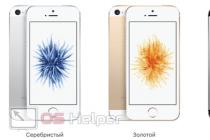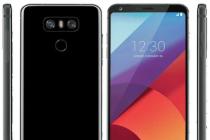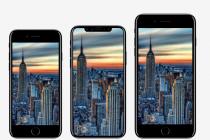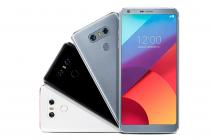With this article, our site continues a whole cycle of useful materials, the purpose of which will be to facilitate the selection of any product from the thousands of options offered on the market. Agree, the choice of a specific model of a device always takes a lot of time that can be spent usefully. In today's article we will talk about choosing a memory card for a smartphone, tablet or camera.
Introduction
Flash memory is used today in almost all electronic devices - both in personal computers and laptops in the form of SSD-drives, and in mobile devices - in the form of internal memory and flash cards. The latter will be discussed in this article. With the help of a small card (their size has long allowed them to be used in the most compact and thin devices), you can increase the amount of available memory of a smartphone, camera or tablet by many gigabytes, so you can carry more content with you - games, music, videos or books with magazines ... In addition, the cost of high-capacity and fast memory cards is now lower than ever.
Memory cards are not as fast as USB "flash drives", but their speeds have long ago reached the level that allows you to easily record 4K video on them, and even more so to watch it. But different models of cards can vary greatly in their read and write speeds - you will learn about this in the section devoted to their characteristics. But it is worth noting that different devices can support cards of a certain maximum size - for example, cheap smartphones sometimes cannot work with microSD cards with a capacity of more than 32 GB. Also, do not expect new speed gains from the old camera due to the use of a card with a higher speed class - it is likely that the card will run in a slower mode to ensure compatibility. To find out about support for specific speeds and volumes of memory cards, you need to refer to the official user manual for a specific device.
By 2015, the memory card industry was focusing on just two types - SD and microSD. The former are more often used in photo and video cameras, sometimes in laptops; the latter are more often used with smartphones and tablets. Once upon a time there were many more types of cards - some of you may remember names like MMC, Memory Stick Duo or xD-Picture. Fortunately, this fragmentation is now gone - almost any device supports either SD or microSD cards (or even both). We will tell you about their differences, as well as other important characteristics below.

Main characteristics of memory cards
As we said in the introduction, now almost the entire memory card market is occupied by models of two types - and microSD. They are used in every possible electronic device: cameras, smartphones, tablets, e-books, GPS navigators and even some game consoles.
SD and microSD cards are divided into four generations. SD 1.0 generation cards supported capacities from 8 MB to 2 GB, SD 1.1 generation cards up to 4 GB, SDHC cards up to 32 GB, SDXC (the most advanced and expensive) cards up to 2 TB. SDHC and SDXC cards cannot be used with SD 1.0 / SD 1.1 devices.
The main thing to remember is that a device that can handle the newer SD card standard can handle older cards, but most likely not the other way around (more on that below).
Memory capacity, GB
Memory cards with a capacity of less than 16 GB are hardly worth buying - their cost has already dropped to a very low level, and 16 GB is not that much for high-quality photos and videos. If you are planning to get serious about photography or video shooting, then for sure you want to use a card with at least 32 GB of memory, even better - with 128 GB. If you just want to increase the memory of your smartphone, then 32 GB in most cases will be enough.
Data writing and reading speed
The write speed of a memory card can be very important to you. The fact is that when taking photos and videos, the cameras transfer the received data to the internal memory buffer, and from it photos and videos are transferred to the memory of the card. If this buffer fills up faster than data can be written to the card (for example, when shooting in burst mode, when the camera takes a series of high-quality images), then they will simply be lost.
Reading speed is not so important, but the higher it is, the faster you can work with the data that is written on the card. For example, if you want to watch high-bitrate video on your tablet and in FullHD resolution or higher, then you need a pretty good card.
You can see examples of maximum and satisfactory card speeds below - in the section " 10 best SD and microSD cards".
UHS interface support
UHS is a faster interface supported by more expensive SD and microSD memory cards. UHS-I can transfer information at 50 MB / s or 104 MB / s, and UHS-II at 156 MB / s or 312 MB / s.
Speed class
A designation of the form "Class x" or "Ux", which means the minimum standardized baud rate of a particular card. Memory cards can be of the following speed classes:
- Class 2 - at least 2 MB / s, you can record SD video.
- Class 4 - at least 4 MB / s, you can record HD video or FullHD video.
- Class 6 - at least 6 MB / s, you can record HD video or FullHD video.
- Class 10 - at least 10 MB / s, high quality FullHD video recording.
- UHS Speed Class 1 (U1) - at least 10 MB / s, high quality FullHD video recording.
- UHS Speed Class 3 (U3) - at least 30 MB / s, video recording in resolution up to 4K.
In addition, manufacturers often refer to the speed of their memory cards with a multiplier like "100x" or "600x" in the name. Several of these multipliers correspond to speed classes (13x - Class 2, 26x - Class 4, 40x - Class 6, 66x - Class 10), and the fastest cards at the moment have a multiplier of 633x and can transfer data at speeds up to 95 MB / s. ...
Adapters included
The set with the memory card may be supplied with special adapters for use in devices that do not support its original type. In most cases, this is an SD adapter for microSD cards - a plastic case for a microSD card that allows you to insert it into a slot for SD cards, which are much larger. If you plan to use one card on several devices supporting different types, then the included adapter will definitely not hurt.
USB card reader included
You can transfer captured photo and video files to a PC not only through the connection of the camera itself - it is much more convenient and sometimes faster to use a special card reader, which is inserted into the USB port of the computer. The presence of such a card reader in the kit is a very nice bonus, which usually does not cost too much.
10 best SD and microSD cards

An SD card that's great for capturing high quality FullHD video and capturing large burst photos. Those who record 4K video will want to go with the models recommended by their camera manufacturer.

A cheaper SD model that should also do a great job of capturing FullHD video and capturing high quality photos.

A very fast and rather expensive SD model that can easily handle 4K video recording and has enough capacity for temporary storage.

Slightly faster SD card than the first two models on this list. It also does a great job of recording FullHD video and has twice the capacity.














